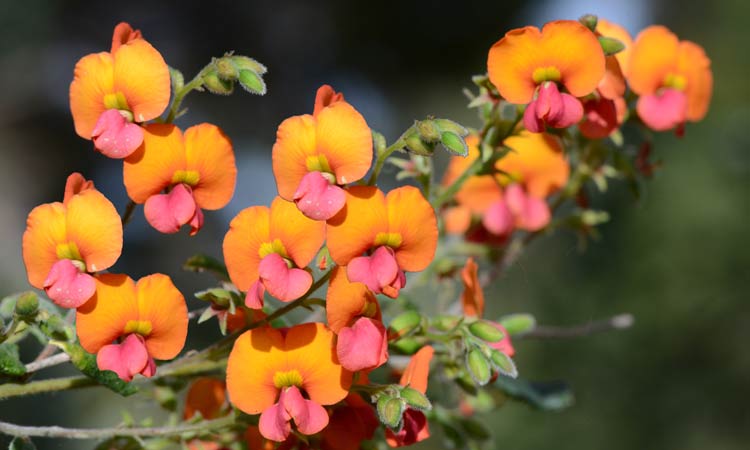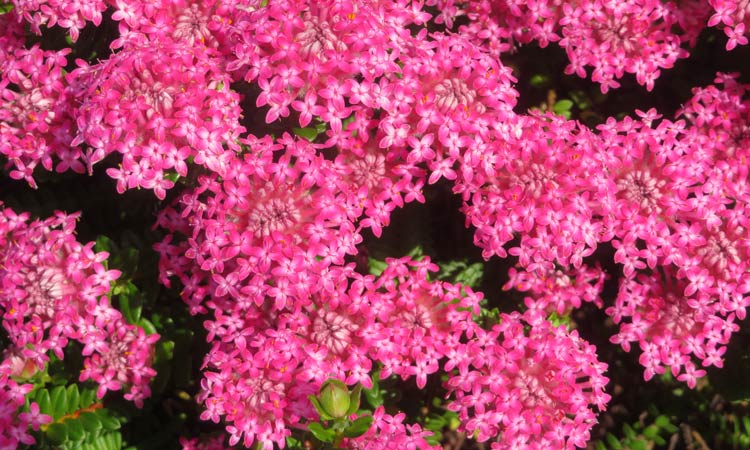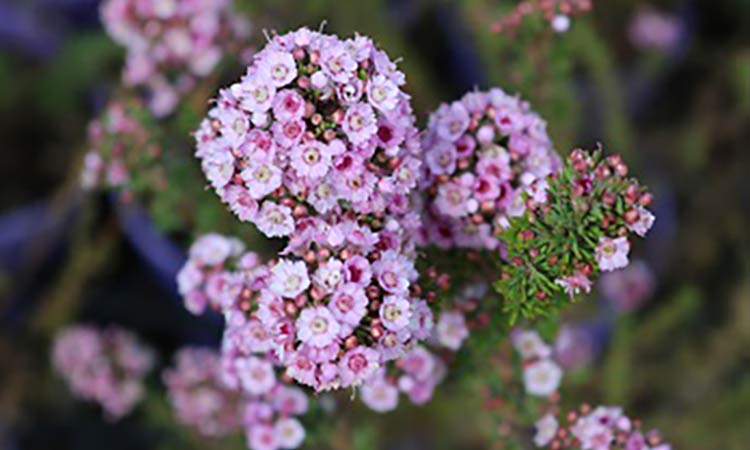Domus Releases New Range for 2025
May 2025

In partnership with Kings Park and Botanic Garden, we are pleased to announce the arrival of the Kings Park Favourites and Rare Wonders range A variety of plants that are endemic to Western Australia have been selected not only for their hardiness and durability but also for their positive environmental benefits which includes habitat and food for a variety of urban fauna, such as beneficial insects and native birds.
Showcasing within this range are a number of proven winners which have been grown in varying conditions across Western Australia for many years and these include Adenanthos cuneatus, Darwinia citriodora, Eucalyptus erythrocorys , Hakea laurina, and Conostylis candicans.
Plants are now readily available through garden centres and leading hardware stores and will be featured at this year's Perth Garden Show in early May.
Below are listed some of the top picks ideal for the home garden.
Banksia ashbyi 'Dwarf'
Banksia ashbyi 'Dwarf' is a compact, evergreen shrub native to Western Australia, ideal for smaller gardens or coastal areas. This cultivar typically reaches a height of 1.5 to 2 meters and spreads 1.5 to 2 meters, forming a dense, rounded shape. The plant's nectar-rich flowers attract various native birds, including honeyeaters, making it a valuable addition to wildlife-friendly gardens.
Features:
- Foliage: The plant has grey-green, deeply serrated leaves, providing year-round interest even when not in bloom.
- Flowers: From autumn to spring, it produces striking orange, cylindrical flower spikes measuring approximately 15 cm in length and 10 cm in diameter. These blooms attract native fauna, including bees and nectar-feeding birds.
Cultivation Tips:
- Sunlight: Thrives in full sun but can tolerate light shade
- Soil: Prefers well-drained soils, including sandy or loamy types
- Watering: Once established, it's drought-tolerant and requires minimal watering. Overwatering should be avoided to prevent root rot.
- Pruning: Responds well to pruning. Early pruning encourages a multi-branched shrub, and removing spent flower spikes can stimulate the following season's blooms.

Chorizema varium
Chorizema varium, commonly known as the Bush Flame Pea, is a striking Australian native shrub renowned for its vibrant, multicoloured flowers and compact growth habit. Endemic to the coastal limestone hills of southwestern Western Australia, this species thrives in well-drained soils and is adapted to the region's Mediterranean climate.
Features:
- Foliage: The plant has grey-green, deeply serrated leaves, providing year-round interest even when not in bloom
- Flowers: From autumn to spring, it produces striking orange, cylindrical flower spikes measuring approximately 15 cm in length and 10 cm in diameter. These blooms attract native fauna, including bees and nectar-feeding birds
Cultivation Tips:
- Sunlight: Thrives in full sun but can tolerate light shade
- Soil: Prefers well-drained soils, including sandy or loamy types
- Watering: Once established, it's drought-tolerant and requires minimal watering. Overwatering should be avoided to prevent root rot.
- Pruning: Responds well to pruning. Early pruning encourages a multi-branched shrub, and removing spent flower spikes can stimulate the following season's blooms.

Pimelea ferruginea 'Magenta Mist'
Pimelea ferruginea 'Magenta Mist', commonly known as the Pink Rice Flower, is an evergreen shrub native to Australia. Renowned for its vibrant magenta-pink tubular flowers that bloom profusely in spring, it adds a striking touch to gardens. The abundant blooms of 'Magenta Mist' attract butterflies and other beneficial insects, enhancing the biodiversity of your garden
Features:
- Size: Reaches a height and width of 1m x 1m making it suitable for various garden settings including pot cultivation.
- Foliage: Displays neat, glossy green leaves that complement its bright blooms.
- Sunlight: Thrives in full sun to partial shade, requiring 6 to 8 hours of sunlight daily for optimal growth.
- Soil: Prefers well-drained soils and is tolerant of various soil types, including sandy loam and loamy soils. Must be free draining
- Watering: Requires moderate watering; once established, it is relatively drought-tolerant. Hardiness: Can withstand light frost and is adaptable to different climatic conditions.
- Tolerant of coastal conditions.
Cultivation Tips:
- Planting: Ideal for rockeries, garden beds, borders, or pots. Ensure the soil is well-drained to prevent root rot.
- Pruning: Remove spent flowers to encourage a denser growth habit and potentially more blooms.
- Fertiliser: Apply a slow-release native fertiliser in late winter to support healthy growth.

View Pimelea ferruginea 'Magenta Mist'
Goodenia varia
Goodenia varia, commonly known as the Sticky Goodenia can be found growing in grassland, woodland mallee and coastal communities from Eucla in Western Australia and eastwards to south-eastern South Australia, north-western Victoria and far south-western New South Wales.
It is a prostrate grower with toothed, rounded leaves that can be sticky when young. It has near year-round yellow fan shaped flowers that attract native butterflies and insects, serving as a food source for their caterpillars.
In Western Australia, Goodenia varia is classified as a Priority Two (P2) species, indicating that it is poorly known and has been recorded from only a few locations.
Features:
- Growth Habit and Use: Sticky Goodenia can reach up to 40cm's. Effective for cascading over rocks, covering sloped areas and as an addition to native pot displays.
- Leaves: The leaves are elliptic to nearly round, measuring 2-4cm in length and about 1 cm in width, with toothed margins. They are arranged along the stems and are typically thick and sticky when young.
- Flowering Season: Flowering occurs in most months, with a peak in October and November.
Cultivation Tips:
- Sunlight: Prefers full sun but can tolerate light shade.
- Soil: Adaptable to various soil types, including sandy, loamy, and heavy clay soils. Must be free draining.
- Watering: Drought-tolerant once established; excessive watering may lead to root rot.
- Maintenance: Responds well to pruning, which can help maintain a compact shape and promote vigorous flowering.

Verticordia plumosa
Verticordia plumosa, commonly known as the Plumed Feather Flower, is a flowering shrub native to the southwest region of Western Australia. Renowned for its feathery, plume-like flowers and aromatic foliage, it is a popular choice in native gardens and as a cut flower. The abundant flowers attract native birds and bees, enhancing garden biodiversity.
Features:
- Size: Typically grows between 0.2 to 1.5 meters in height.
- Leaves: Features linear, needle-like leaves that are semi-circular in cross-section, measuring 1.5 to 14 mm in length.
- Flowers: Produces scented flowers in shades of pink
Cultivation Tips:
- Sunlight: Thrives in full sun to partial shade.
- Soil: Prefers well-drained soils.
- Watering: Once established, it is drought-tolerant but benefits from regular watering during dry periods.
- Pruning: prune after flowering to maintain compact growth.

To find out more information about these plants and the complete Kings Park Favourites and Rare Wonders range www.bgpa.wa.gov.au/news/kings-park-launches-plant-range-tried-and-true-favourites




